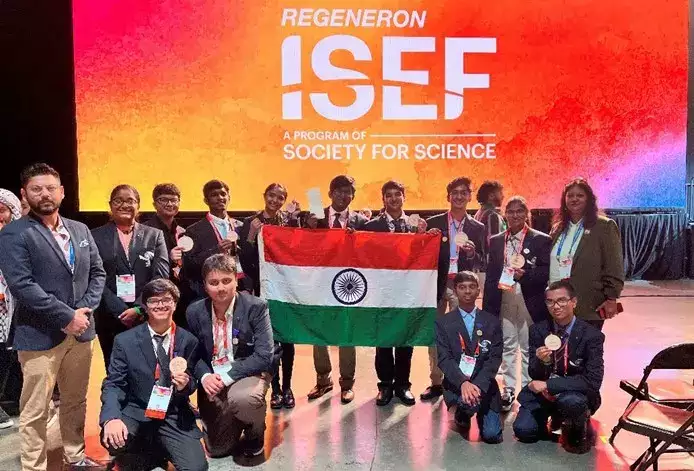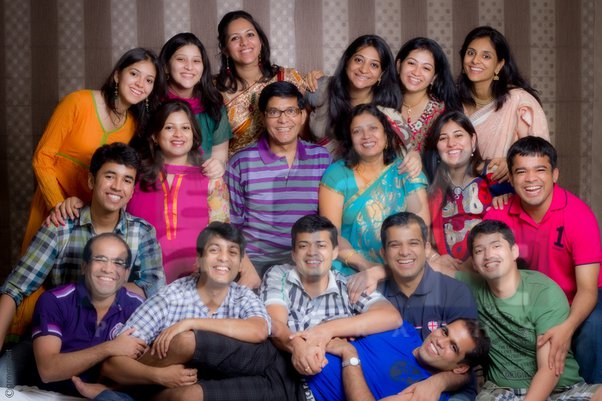“Despite constituting less than 1% of the U.S. population, Indian-Americans are 3% of the nation’s engineers, 7% of its IT workers and 8% of its physicians and surgeons,” wrote the popular Forbes magazine in 2008. “The overrepresentation of Indians in these fields is striking–in practical terms, your doctor is nine times more likely to be an Indian-American than is a random passerby on the street.”
Fifteen years later, in 2023, the story of the Indian Americans has grown even stronger; their successes encompassing almost all areas of American life – living the American Dream. The less than four million Indian Americans appear to be gaining prominence and have come to be recognized as a force to reckon with in this land of opportunities that they have come to call as their adopted homeland.

In fact, Indian Americans have for some time been considered a “model minority” in the US — they are better educated, have better jobs, are wealthier than many other immigrant populations and enjoy both political and business clout. Here’s data that points to these factors:
At a virtual interaction with Nasa scientists who were involved in the historic landing of Perseverance on Mars on March 3, US President Joe Biden remarked, “Indian-of-descent Americans (sic) are taking over the country. You (Swati Mohan), my Vice President (Kamala Harris), my speech writer (Vinay Reddy).”
Biden, who was sworn in as the 46th president of the United States on January 20, is in a good place to judge that. He has created history by appointing at least 55 Indian-of-descent Americans to key positions in his administration. And of course, his vice- president, Kamala Harris, is also an American of Indian-descent.
The rise of Kamala Harris, daughter of an Indian mother, as the Vice President represents a coming-of-age of the Indian American community in the United States. Harris was born to civil rights activist parents a year before the Immigration and Nationality Act of 1965 was passed; this Act relaxed the quota regime that restricted foreigners. At that time, there was one Indian American lawmaker in the US House of Representatives — the Punjab-born Dalip Singh Saund, also from California.
The Senate India Caucus was created in 2004. Harris was elected to the US Senate in 2016. The following year, four Indian Americans were elected to the US House of Representatives, and more were elected to the Senate and Congress of other states. Two other persons of Indian origin — Bobby Jindal and Nikki Haley — served as Governors of Louisiana and South Carolina, respectively, in that period.
In 2022, there are as many as five persons of Indian Origin have been elected to the House of Representatives: Congressmen Raja Krishnamoorthi, Ro Khanna, Dr Ami Bera, Congresswoman Pramila Jayapal, and Shri Thanedar, a Karnataka-born entrepreneur – have been re-elected to the US House of Representatives
Today, more Indian Americans hold public office than ever before. However, politics is far from being the only sphere in which the Indian diaspora has gained influence in the last few decades.
Historically, Indians in the US worked in medicine, science & technology, engineering and mathematics-related jobs. Some, like the Patel community from Gujarat, took to the hotel industry and grew to dominate it. Others were entrepreneurs in Silicon Valley after the digital revolution of the 1980s.
In 1997, Ramani Ayer became the CEO of the Fortune 500 financial firm The Hartford, becoming the first in the list of Indian leaders heading American businesses.
At present, 2% of the Fortune 500 companies of American origin — including Microsoft, Alphabet, Adobe, IBM, and MasterCard — are led by Indian American CEOs. One in every seven doctors in America is of Indian descent;
Numbering about 3.8 million, or about 1.2 per cent of the US population, the Indian diaspora in the US is the richest, most educated and among the most successful ethnic groups in that country – pulling ahead of even white Americans on most counts. More than 75 per cent of Indian Americans have arrived in the US after 1990.

Looking ahead to the 2024 Presidential Elections, there are as many as three of them are seeking their way to be on the ballot. Two of the three Republicans who have announced plans so far to enter the US presidential race are Indian-Americans. While Nikki Haley is a familiar name, surprise candidate Vivek Ramaswamy is much less well known. If President Biden seeks reelection, the current Vice President, Harris is likely ot be on the ballot as his running mate in 2024.
Ramaswamy, a multimillionaire entrepreneur and author of the book Woke, Inc., announced his presidential bid on 21 February with an appearance on a Fox News show and a video laying out his political views. He wants to launch a “cultural movement to create a new American dream” based on the “pursuit of excellence” – and he says “diversity is meaningless if there’s nothing greater that binds” people. The 37-year-old, who was born in Ohio, studied at Harvard and Yale, earned his millions as a biotechnology entrepreneur and then founded an asset management firm.
Democrat Shekar Narasimhan, founder and chairman of the AAPI (Asian Americans and Pacific Islanders) Victory Fund, says that while he is happy to see more Asian-Americans gain prominence in politics, he isn’t confident about Mr Ramaswamy’s ideas.
“He is a business guy and has a clean slate, but what are his promises?” Mr Narasimhan asks. “Does he care about medical care for the elderly? What are his plans for infrastructure spending? He doesn’t have fixed positions and has not articulated his policies yet.”
Indian-American Republicans are predicting a “three-way race between Mr Trump, Mr DeSantis and Ms Haley” and prefer to wait instead of forging early alliances, especially as there is still uncertainty around the former president’s legal battles.
Dr. Sampat Shivangi says that he admires Ms Haley’s aggressive campaigning style and would support her in case Mr Trump is forced to withdraw from the race. “Mr Trump has 40% ratings and Ms Haley is in single digits, but she is our candidate. Her being Indian-American is the main reason why we are close to her,” he says.
Irrespective of political differences, the Indian-American community is happy about the sharp increase in their political participation, especially over the last three election cycles, and is proud of the rise of another of their own.
“A beautiful thing is happening: Indian-Americans are coming to the forefront,” Mr Gaekwad says, adding that the latest bid could encourage more Indian-Americans to run for elections even at the local level. Even political opponents agree with that. “If our children see Americans with a name like Ramaswamy run, and a Khanna or Krishnamoorthi can win, that’s a good thing,” Narasimhan says.
